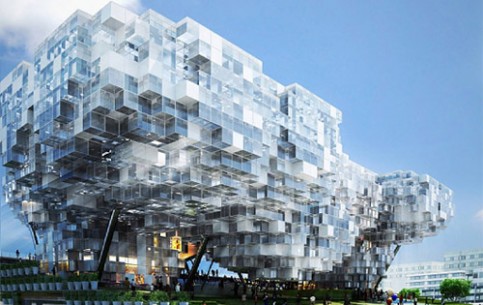
Being one of the few remaining city-states in the world Singapore has always been his charming tropical scenery and hospitality and attracted visitors from all over the world.
Singapore is an island nation located at the southern tip of the Malay Peninsula. It is one of the few remaining city-states in the world and the smallest country in Southeast Asia. Chinese make up more than 75% of the community; Malays and Indians make up much of the remainder. There are many foreign workers. The weather is usually sunny with no distinct seasons. Rain falls almost daily throughout the year, heavy showers that rarely last longer than an hour. According to legend, Srivijayan prince Sang Nila Utama landed on the island in the 13th century and, catching sight of a strange creature that he thought was a lion, decided to found a new city he called Singapura, Sanskrit for Lion City.The British East India Company established a trading post on the island in 1819. The British used Singapore as a strategic trading post along the spice route. It became one of the most important commercial and military centers of the British Empire. When it was occupied by the Japanese during World War II, Winston Churchill called it "Britain's greatest defeat". Singapore reverted to British rule in 1945. Singapore became an independent republic on 9 August 1965.The early onset of town planning in colonial Singapore came largely through a "divide and rule" framework where the different ethnic groups were settled in different parts of the South of the island. Chinese and Indian coolies working to load and unload goods from barge boats settled on the banks of the river. The Malays, consisting of the local "Orang Lauts" who worked mostly as fishermen and sea-farers, and Arab traders and scholars were mostly found in the South-east part of the river mouth, where Kampong Glam stands today. The European settled around Fort Canning Hill. The early Indian migrants also settled more inland of the Singapore River, where Little India stands today.One of the most noticeable features of this tiny but bustling city-state is its cleanliness - indeed, it is sometimes criticized for its many seemingly petty regulations, such as the banning of chewing gum - but crime is virtually unknown, and it is one of the world's safest places to visit. Singaporean food is legendary, with bustling hawker centers and 24-hour coffee shops offering cheap food from all parts of Asia, and shoppers can bust their baggage allowances in shopping meccas like Orchard Road and Suntec City. In recent years some societal restrictions have also loosened up, and now you can barhops all night long, although alcohol is very pricey and chewing gum can only be bought from a pharmacy.The Singapore Zoo is acclaimed as one of the world's most spectacular zoos. The use of natural barriers like streams, rock walls and vegetation to separate animals from visitors enhances the "open" zoo concept. Spreading over 28 hectares, it is home to over 3,600 mammals, birds and reptiles, including rare and endangered species. The Gardens epitomises the tropical island's luxuriant parks. Spread over 52 hectares and close to the centre of the city, the Gardens is a combination of untouched primary forest and specialty gardens displaying frangipanis, roses, ferns and desert plants, to name a few. There are numerous plant species here, including many rare specimens, reflect the Gardens' richness and diversity of plant life.
Related objects
 |
|
 |
|
 |
|
 |
|
 |
|
 |
|
 |
|
 |
|
 |
|
 |
|
 |
|
Singapore • News
![]() • 2014-05-31 •
• 2014-05-31 •
Сингапур вновь признан лучшим городом Азии для проведения конвенций ...
![]() • 2014-05-22 •
• 2014-05-22 •
СИНГАПУР ЗАНЯЛ ВЫСОКУЮ ПОЗИЦИЮ В РЕЙТИНГЕ ЛУЧШИХ ГОРОДОВ ПО ИТОГАМ МИРОВОГО ИССЛЕДОВАНИЯ TRIPADVISOR ...
![]() • 2014-05-22 •
• 2014-05-22 •
The Importance of Dreaming and Wilderness WiFi in Travel Decision Making ...
![]() • 2014-05-14 •
• 2014-05-14 •
Эксклюзивные подарки от Aesop в Capella Singapore ...
![]() • 2014-04-20 •
• 2014-04-20 •
Capella Singapore
о. Сентоза, Сингапур
...
All tours with a visit to object "Singapore" ![]()
YouTube Broadcast video clips
![]() Singapore
Singapore
![]() Sentosa Beach Viewing Tower
Sentosa Beach Viewing Tower






